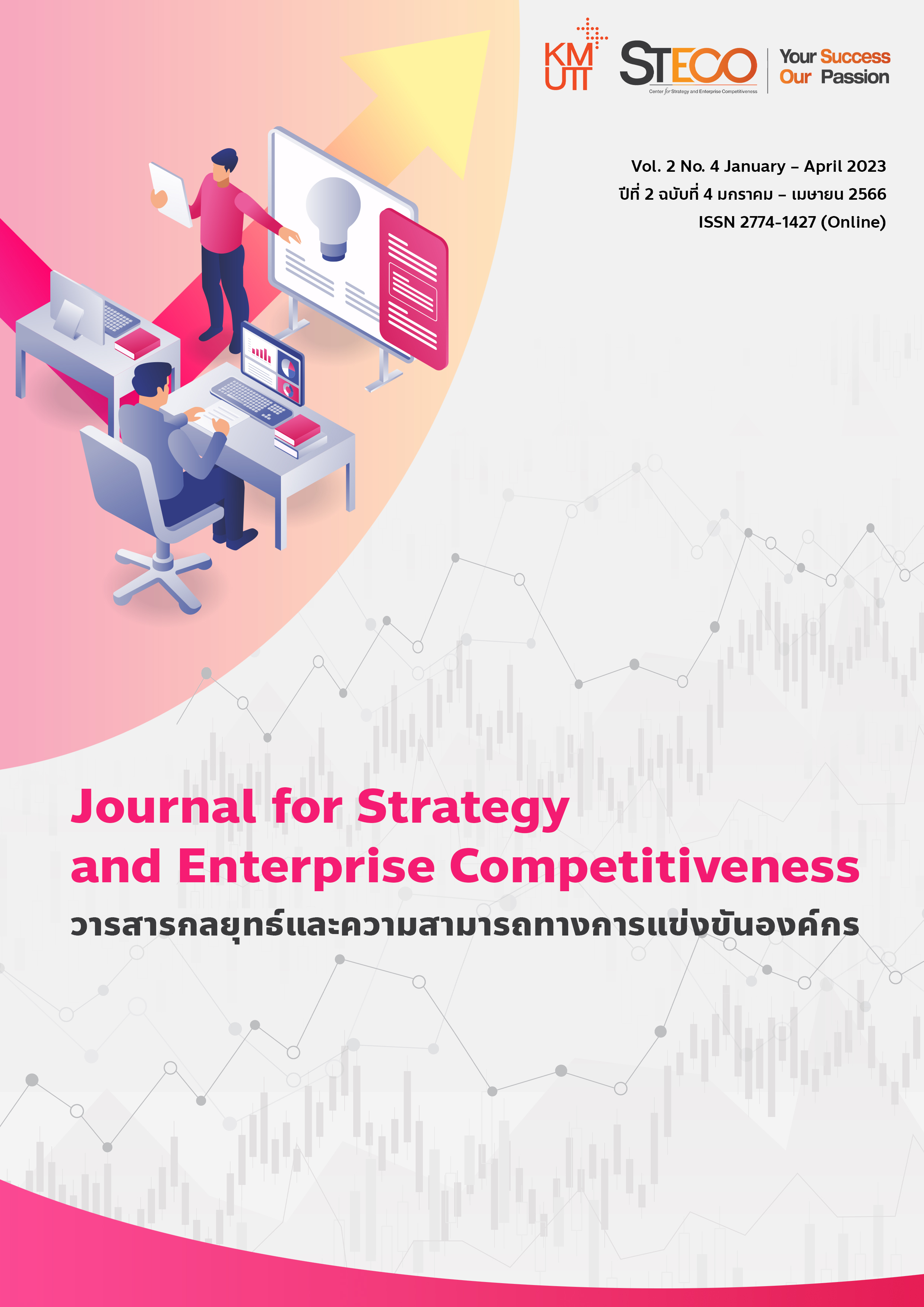Organization Management to Retain Gen Y’s Employees under Multicultural in Thai-Japanese Joint Venture Company
Keywords:
Employee Engagement, Job Satisfaction, Generation Y EmployeesAbstract
This research aims to study the factors affecting the intention of job resignation for generation-Y employees and to study the employees’ motivation of work at a Thai Japanese joint venture company as a guideline to retain employees. This research deploys quantitative method using questionnaire to collect data. The sample group is 76 generation-Y employees aged between 21 - 38 years (born between 1981 and 2000) from a Thai Japanese joint venture company. A case study company is a factory producing clear glass and processed glass located in Samut Prakan Province. The results show that factors affecting the intention of job resignation for generation-Y employees are career growth, renumeration package, and colleagues. Regarding the challenges causing Gen-Y employees in Thai Japanese joint venture company to resign are discouragement to grow in the company, the job assignment is not suitable with their educational background or intention to do, and the job assignment is not reasonable for the remuneration. Moreover, both the unsatisfying working environment and working conditions also cause Gen Y employees to resign. The solutions to these challenges are the organization should have a clear career path for its employees, having strong coaching team to construct effective coaching methods for new joiners and adjusting company’s regulations for flexibility. This is to develop a Thai Japanese joint venture company to be compatible with Gen-Y employees so that the Gen-Y employees will be in the company for a long time without the intention of resignation.
References
Anviset, J., and Rahothan, J. (2019). Factors affecting intention to quit of generation y staff in Autopart manufacturers in Laemchabang Industrail estate. Journal of Graduate Research Sripatum University, 10(1), 205-217.
Fukofuka, S. (2014). Factors that predict employee retention in profit and not-for-profit organizations. Global Journal of Human Resource Management, 2(4), 1-8.
Herzberg, F., Mausner, B., and Snydermann B. (1959). The motivation to work. New York: Wiley.
Herzberg, F. (1966). Work and the nature of man. New York: World Publishing.
Hewitt, A. (2015). 2015 Trends in global employee Engagement. Retrieved from https://www.aonhumancapital.com.au/getmedia/9228ab41-852b-4c50-abc6-4caa3529c86e/2015-Trends-in-global-employee-engagement.pdf
Hong, E. N. C., Hao, L. Z., Kumar, R., Ramendran, C., and Kadiresan, V. (2012). An effectiveness of human resource management practices on employee retention in institute of higher learning: A regression analysis. International journal of business research and management, 3(2), 60-79.
Imai, H., and Tomofumi, A. (2012). Toyota's Overseas Management. Post Books.
Imna, M., and Hassan, Z. (2015). Influence of human resource management practices on employee retention in Maldives retail industry. International Journal of Accounting, Business and Management, 1(1), 54-87.
Jutharat, A., Jiraporn, R., (2019). Factors Affecting Intention to Quit of Generation Y Staff in Autopart Manufacturers in Laemchabang Industrail Estate. Journal of Graduate Research Sripatum University, 10(1), 206-208.
Mehta, M., Kurbetti, A., and Dhankhar, R. (2014). Review Paper-Study on Employee Retention and Commitment. International Journal of Advance Research in Computer Science and Management Studies, 2(2), 154-164.
Ministry of Foreign Affairs of Japan. (2017). Relations between Japan and Thailand. Retrieved from https://www.th.emb-japan.go.jp/itpr_th/relation_index.html
Pajchamat, P. (2018). The factors relating job satisfaction affected to employee retention of Japanese financial service company. College of Management Mahidol University.
Rojarayanon, B. (2004). Know Thai, understand Japanese. Bangkok: TPA Press.
Thiptiampong, K. (2016). 559). Culture (?) Work of Japanese people. Retrieved from https://mgronline.com/japan/detail/9590000121106.
Yamane, T. (1973). Statistics. An introductory analysis. (3rd Edition). New York: Harper & Row.
Downloads
Published
How to Cite
Issue
Section
License
Copyright (c) 2023 Journal for Strategy and Enterprise Competitiveness

This work is licensed under a Creative Commons Attribution-NonCommercial-NoDerivatives 4.0 International License.
The opinions appearing in the content of articles of Journal for strategy and enterprise competitiveness. It is the opinion and responsibility of the article author. It is not the opinion and responsibility of the Center for strategy and enterprise competitiveness, King Mongkut's University of Technology Thonburi
Articles, information, content and images, etc., in the Journal for strategy and enterprise competitiveness. It is the exclusive copyright of the Center for strategy and enterprise competitiveness, King Mongkut's University of Technology Thonburi. If an individual or entity wants to distribute all or part of the content or for any action must obtain written permission from the Center for Strategy and enterprise Competitiveness, King Mongkut's University of Technology Thonburi.


